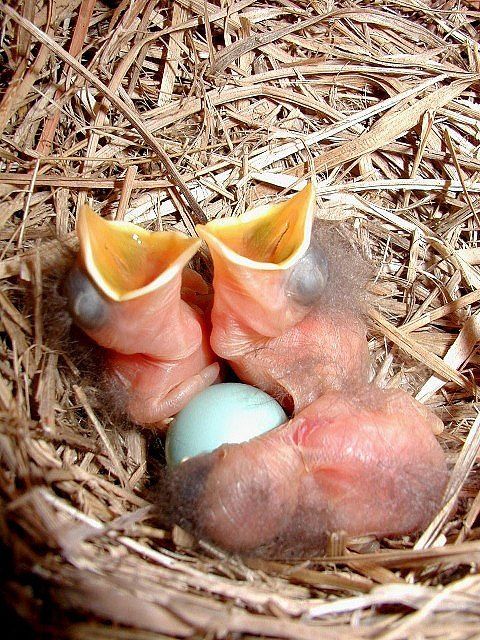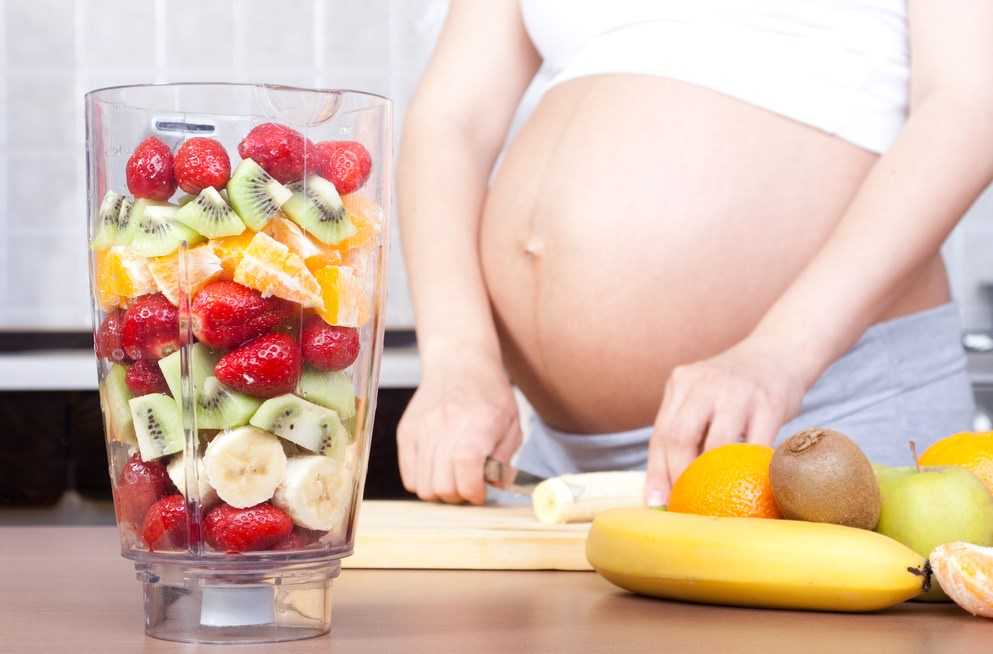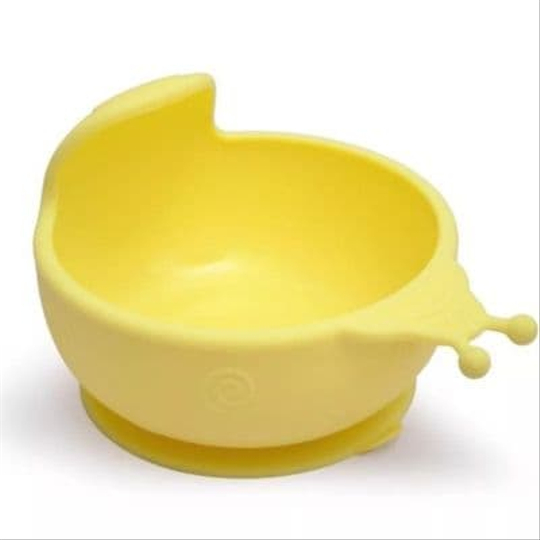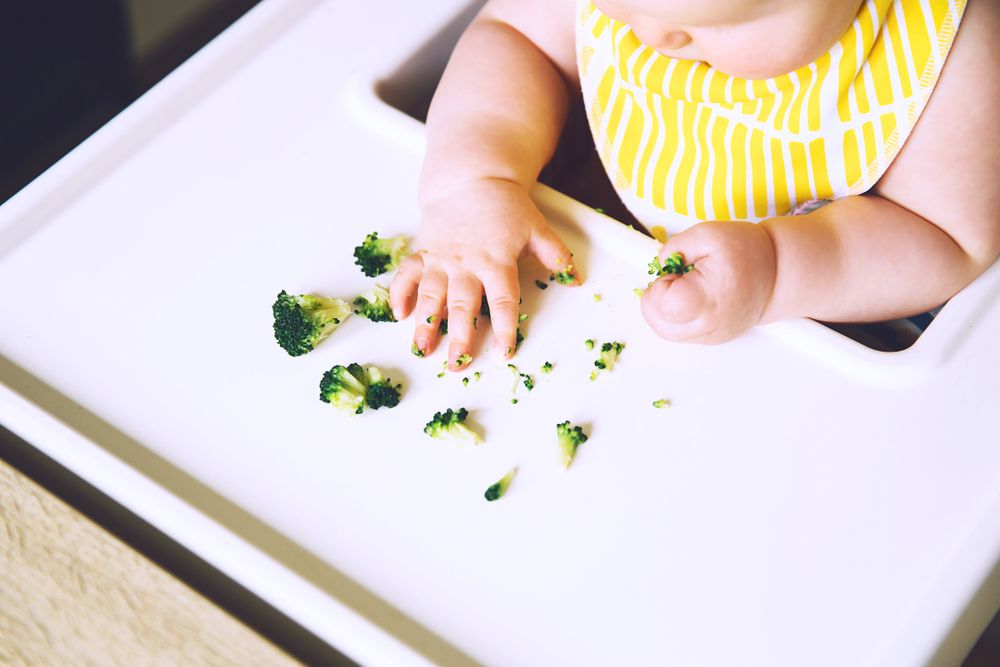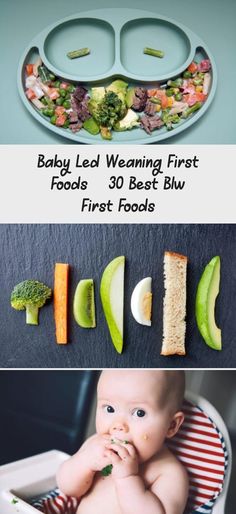Feeding a baby bluebird
What Do Baby Bluebirds Eat? How to Take Care of Baby Bluebirds
What’s This Post About?
Bluebirds are medium-sized birds that belong to the thrush family. These beautiful species are known to be a symbol of hope, renewal, and love. The three main types of bluebird species found in America are Eastern bluebirds, Mountain Bluebirds, and Western bluebirds.
This post consists of information required to take care of a baby bluebird and feed it properly. If a baby bluebird is fed healthy food sources, they grow into beautiful, healthy birds with a fully developed body structure.
Bluebirds are insectivorous, which means they mainly feed on different kinds of insects such as snails, grasshoppers, spiders, and caterpillars. The babies are fed mashed insects that are easy for them to consume and digest. In the winter seasons, baby bluebirds survive on fruits and fresh berries.
What Are Bluebirds?
Let’s discover the bluebird species in detail.
Bluebirds are medium-sized songbirds that are commonly found across North America. Their bright-colored bodies add to nature’s beauty. Bluebirds belong to the thrush family and have a distinct flute-like sound.
There are many bird species worldwide, but not all are blue. Examples of a few bluebirds include blue jays, scrub jays, blue grosbeaks, great blue herons, and cerulean warblers, all of which have admirable blue hues.
However, in this post, we will be discussing about baby bluebirds which shall mainly include Eastern Bluebirds, Mountain Bluebirds, and Western bluebirds and explore their diet, appearance, habitat, and much more.
Identification
Bluebirds are not bigger than the size of an adult hand. They come under the medium-sized bird category. Most bluebirds have thin, strong beaks for plucking insects and berries off the ground.
Bluebirds, in general, possess the above-stated features. Moreover, if observed, some bluebirds have blue eggs.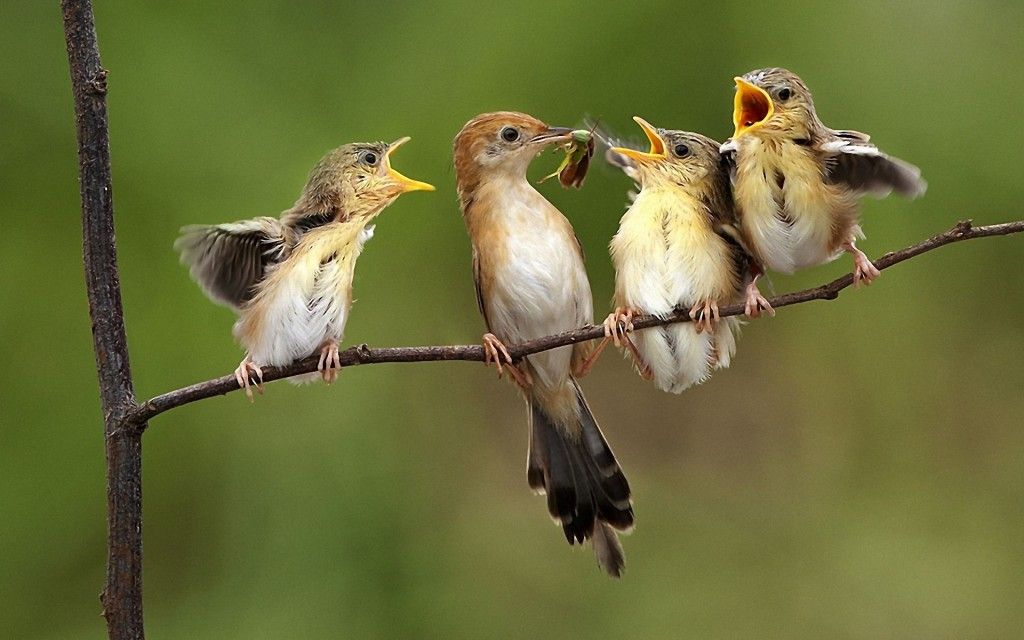 The eggs they lay are blue due to the increased amounts of biliverdin in the bluebird’s body.
The eggs they lay are blue due to the increased amounts of biliverdin in the bluebird’s body.
Species
The most common types of bluebirds found across North America are:
- Eastern Bluebirds
- Western Bluebirds
- Mountain bluebirds
These bluebirds possess similar physical characteristics and have shades of blue imprinted on their bodies.
Western Bluebirds are very similar to Eastern bluebirds. It is challenging to differentiate between the two species. The difference is that Western bluebirds are considerably brighter and darker than Eastern bluebirds. They have a blue band under their chin and a buffy rust chest.
Eastern Bluebirds have bright blue bodies with an orange chest that starts right below their thin beaks. Their bead-like shiny black eyes add to the cuteness of their look. Moreover, Eastern bluebirds are found in the East, on the Rocky Mountains, while the Western bluebirds are towards the west of the Rocky Mountains.
Mountain Bluebirds are different in appearance from the other two birds. They are entirely blue with no orange-rust chest. They are grayish-blue overall and have a thin straight black bill. These bird species are found in the Rocky Mountain ranges through the United States, Canada, and Mexico.
FUN FACT
Bluebirds use the ‘ground-sallying’ technique to perch for food.
Habitat
If we talk about the bluebird’s habitat, we will come across many places where these beautiful birds can be found. Bluebirds love grasslands and parks. They like to hunt for insects in the grass, and plants within the gardens which also help provide them with plenty of perching space.
Open woodlands are what they mainly prefer, as places clouted with trees block their sight. Their sight is what enables them to spot good feeding areas and protect themselves from potential predators.
FUN FACT
Bluebirds mostly perch on farmlands, vineyards, and parks. Place bluebird boxes there to capture a sight of these pretty birds.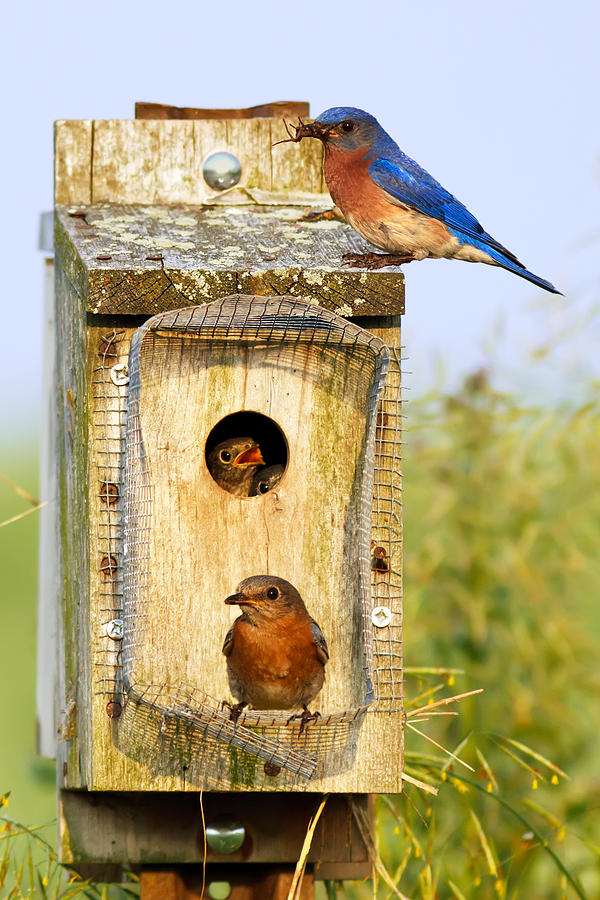
Migration
Bluebirds are migratory birds and may travel south in search of warm locations to nest. Bluebirds are commonly found in the United States and Canada for the summers and warmer areas throughout the winter season.
The migration period towards the south begins in August, and migration towards the north starts in March.
INTERESTING FACT
The mountain bluebird can be found in Alaska in the summer season.
Nesting Behavior
The fascinating bluebirds are cavity nesters. They prefer nesting in tree holes and other hole structures. These birds are responsible for their babies during the incubation period. Once the babies hatch, the parents have to feed them and clean the fecal sacs that the babies excrete.
Bluebirds look for insects on the ground, then carry them in their mouth for their young ones. The female bluebird produces a clutch size of 3 to 6 dull blue eggs and incubates them for 13 to 16 days. The young birds are ready to leave the nest within 15 to 20 days from their hatched time.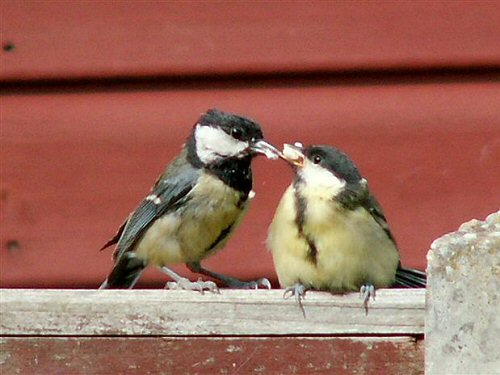
PRO-TIP
It's always best to put out nest boxes in your yard in the late February period because this is when the bluebirds start to look for nesting sites.
What Do Bluebirds and Baby Bluebirds Eat?
Now that we know everything about a bluebird, let's talk about their feeding patterns.
Bluebirds are insectivorous and their diet mainly comprises insects. When insects are rarely found, such as in the winter season, these birds shift to consuming fruits and other bird feed items that birders offer via yard feeders.
Birds prefer munching on food sources that are easily available to them. This is why there might be slight differences observed in the feeding patterns of bluebirds in the wild and bluebirds found in backyards. The placement of the bird feeders also plays an important role in attracting and feeding these delicate creatures.
Wild Bluebirds
Wild bluebirds tend to eat whatever is found by them naturally. They share a similar diet with bird species like thrushes, American robins, solitaires, hermits, and fieldfares.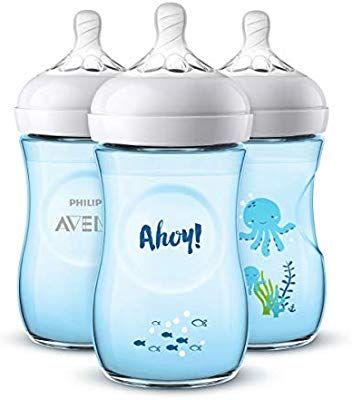 The food they eat depends on their habitat, the season, availability, and activity levels.
The food they eat depends on their habitat, the season, availability, and activity levels.
According to research, a bluebird’s stomach is 68% made for digesting insects, and the rest 32% is for consuming fruits, seeds, and other food items.
The followings items are what wild bluebirds feed on:
- Flying insects: moths, mosquitos, and termites.
- Medium-sized insects: crickets, beetles, ants, grasshoppers, and spiders.
- Crawling insects: caterpillars, grubs, snails, and insect larvae.
- Berries: holly, dogwood, pokeweed, hackberries, and sumac.
- Vine fruits and small tree fruits: cherries and grapes.
Bluebirds tend to eat insects throughout spring, summer, and early fall. When the insect population reduces, the birds then shift to other food sources such as fruits and berries in the late fall and winter seasons.
INTERESTING FACT
The southern population of birds forage on more insects throughout the year but still switch to fruit-based diets during colder times.
Yard Bluebirds
You might wonder what your yard has to offer these little birds. However, you will be surprised to know what treats bluebirds can dig into from your yard.
Yard bluebirds eat the same kind of food that they might get in other habitats. The difference is that bluebirds may get many options in backyards in terms of trees and bushes, using which they can extract fruits.
Apart from the usual insects and berries that the bluebirds like to munch on, other items that can be added to the feeders to attract these birds are:
- Diced berries: blackberries and raspberries.
- Mealworms: canned, dried, roasted, or live
- Small chunks of suet.
- Chopped peanuts without the shells.
- Fruit chunks: pears or apples.
- Dried fruits: blueberries, cranberries, blackcurrants, and raisins.
- Sunflower hearts.
- Peanut butter.
- Bird dough.
- Broken eggshells for calcium.

The above-mentioned food items should be offered to the birds via bird feeders. These will provide the bluebirds with a complete source of nutrients and help them maintain a healthy diet.
It is advisable to keep open feeders in the form of trays for the bluebirds as it makes them feel more comfortable and secure to eat from. It is best to place live mealworms in plastic containers with smooth edges to prevent them from crawling outside the dish.
WARNING!
Do not spray your plants with insecticides or pesticides if you want to attract birds to your yard. It may kill them.
Baby Bluebirds
Baby bluebirds are known as hatchlings as they newly hatch. They then transition into nestlings or fledglings as they grow older. Nestlings are mainly dependent on their parents to feed them food, while the fledglings can eat all types of food that an adult bluebird can eat.
Research states that female bluebirds feed their babies more than male parents. The percentage goes as, females: 54.8% times and males: 45.2% of the time. The parents do not play an equal role in feeding and raising their young.
The percentage goes as, females: 54.8% times and males: 45.2% of the time. The parents do not play an equal role in feeding and raising their young.
Their parents mainly feed nestlings the following food items:
- Spiders
- Beetles
- Earthworms
- Caterpillars
- Grasshoppers
- Mealworms
- Berries
The adult bluebirds feed their babies after every ten to fifteen minutes. If you find a baby bluebird stranded on the ground, you can always pick it up carefully and provide it with:
- Raw Liver
- Boiled Eggs
- Dog or cat kibble
- Mealworms
INTERESTING FACT
Bluebirds collect more than 68% of insects during the nesting period as they need a higher source of protein during these days.
What Food Do Bluebirds Not Eat?
Every animal has its likes and dislikes.
In this post, we have mentioned all the food sources that a bluebird would like to consume.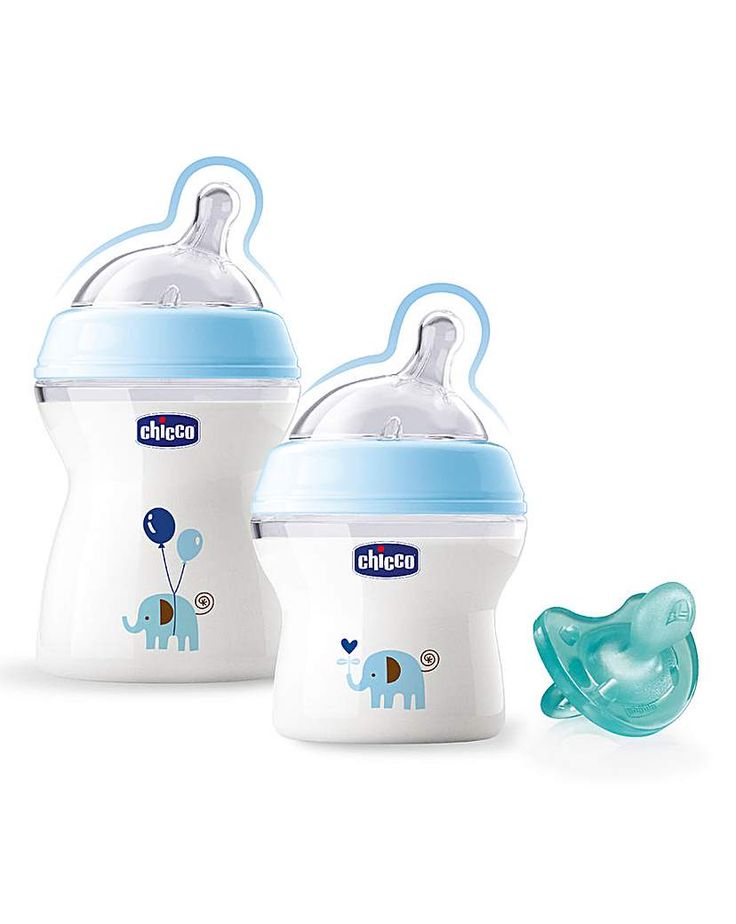 However, there are some common food items that most bluebirds avoid. These food items are:
However, there are some common food items that most bluebirds avoid. These food items are:
- Millet
- Sunflower Seeds
- Hummingbird Nectar
- Mixed Bird Seeds
- Cracked Corn
- Whole peanut
If the staple food is not available, bluebirds tend to go for sunflower chips. They do not like hummingbird nectar because of the sweetness. Bluebirds have a short and small bill, making it difficult for them to eat a whole peanut or cracked corn.
FUN FACT
Bluebirds do not have long beaks like hummingbirds, making it difficult for them to suck all the nectar out.
How Should Bluebird Feeders Be Placed in The Yard?
Feeder placement plays a vital role in feeding the bluebirds.
Bluebird feeders should be placed correctly as they will become a regular visiting spot for the birds. The birds should be able to view them even from a distance and get attracted to the treats that are being offered.
Placing the right kind of feeder at the right spot can support the feeding process of a bluebird.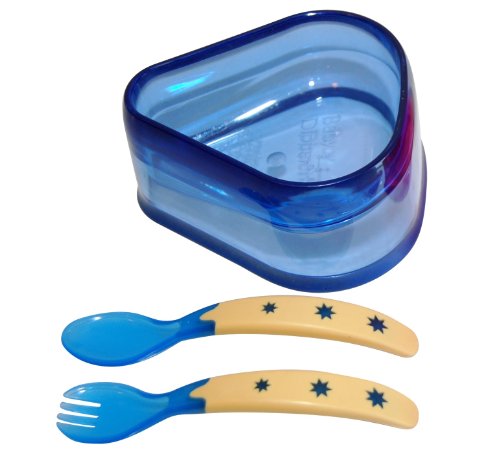 Once you have purchased your feeders, you need to keep in mind specific tips and tricks for effectively attracting the bluebirds to your yard. The tips are as follows:
Once you have purchased your feeders, you need to keep in mind specific tips and tricks for effectively attracting the bluebirds to your yard. The tips are as follows:
- Place the bluebird feeders in open spaces where the bluebirds often visit.
- Window bird feeders can be placed on top of the windows with a suction cup attached to them.
- The feeders should not be hidden and should be noticed by the bluebird from a distance.
- Hang the bluebird feeders in visible areas of trees in your backyard.
- You can hang multiple feeders on poles, each with different kinds of food.
PRO-TIP
Adding water sources to your backyard can be an additional attraction for the birds.
You can consider purchasing the E-Know Window Bird Feeder to make sure that you are putting out the feed correctly for these birds.
E-Know Window Bird Feeder
High-Quality 2 Pack Bird Feeders made out of heavy-duty acrylic.
How To Take Care of Baby Bluebirds?
If you ever find a baby bluebird stranded alone, what steps should you take?
If a baby bluebird is found, orphaned, or injured, it is always best to contact a licensed wildlife rehabilitator. Meanwhile, you can place the baby bluebird in a warm shoebox following some professional approaches and keep it safe from wild predators.
If you find a baby bluebird on the ground, the ideal thing to do would be to return it to the nest. Try to locate a nest nearby; look in trees and bushes. If you find the nest, then carefully place the baby back in its place. Make sure to carry the baby bluebird with soft towels or gardening gloves.
If you can’t find the nest or parents of the baby bird nearby, then you can try taking care of it to keep them safe and healthy.
Warmth
The first thing required to do would be to provide the baby with a warm space. You can fill a glove with warm water, cover it up with a dish towel and place it around the box that the baby bluebird is put in.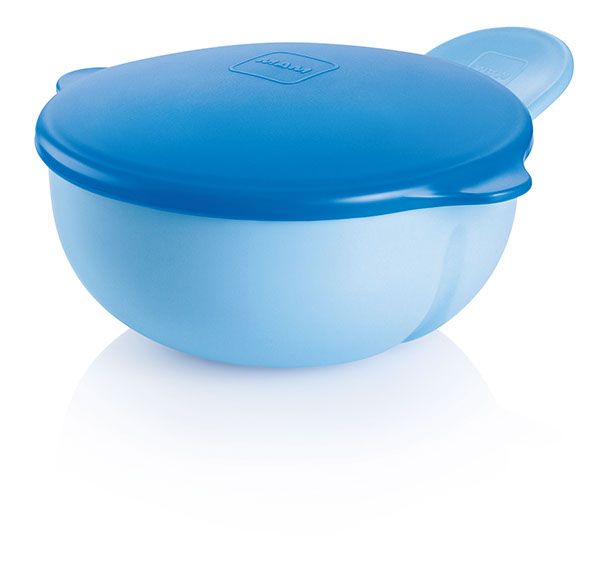 Then cover the box so that some amount of heat is being provided to the featherless baby.
Then cover the box so that some amount of heat is being provided to the featherless baby.
PRO-TIP
You can place a thermometer in the box to measure the exact temperature.
Hydrate The Baby
Once the baby is warm and cozy, you need to check up on its hydration levels. If the baby bluebird’s skin is reddish and does not spring back when gently tugged, it means that the baby needs moisture. It is important to note that no baby bird should be directly given water to keep them hydrated.
You can provide the baby with moisture-driven food that provides them with enough water to keep their body hydrated.
WARNING!
Do not give water to young birds. They may inhale the water leading to inhalation pneumonia.
Feeding
Feeding the baby will be necessary if you want it to survive. Try to make a homemade mixture of 4 tablespoons of Karo syrup mixed with half a cup of warm water and a pinch of salt. Dip your fingers in the mix and brush the wet fingers on the baby bluebird’s beak.
If the baby can open its beak actively, you can also soak bread in the mixture mentioned above and put the tiny pieces into the bird’s beak.
The baby should be fed patiently after every fifteen minutes. Let the bird take a rest if it is too weak to open its mouth or swallow the food.
If the baby bluebird has closed eyes, it should be fed every 15 to 20 minutes. However, if the baby’s eyes are open, then the feeding can be reduced to once every 45 minutes.
PRO-TIP
You will need to feed the baby bird till it starts to stand, walk, and perch on its own.
Keep Reading!
Having read through the post, you must now be well aware of the feeding patterns of bluebirds and their babies. You can use these tips and tricks to attract these beautiful bluebirds to your backyards.
Create a schedule to place their favorite food items, install a birdbath and grow suitable trees and bushes to provide them with a safe and comfortable environment.
Taking care of a baby bluebird might be a challenging task.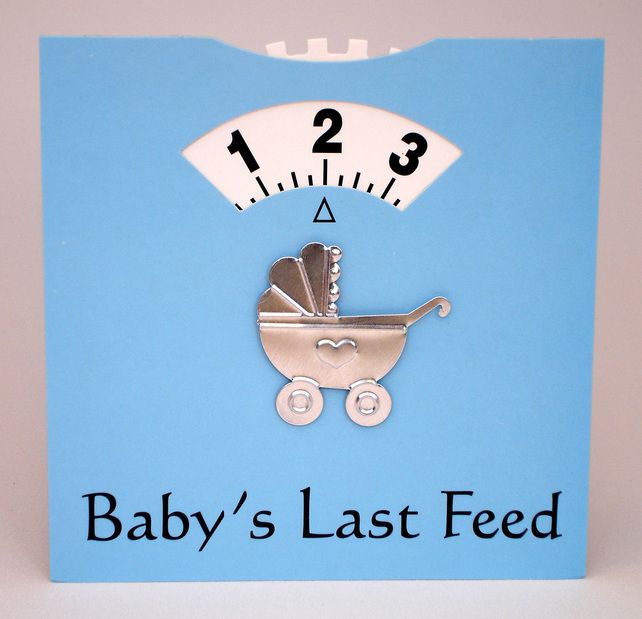 The basics of what is required to take care of these babies are also covered in this post, through which you will be well-prepared to handle any unpredictable situations.
The basics of what is required to take care of these babies are also covered in this post, through which you will be well-prepared to handle any unpredictable situations.
If you want to learn and discover other bluebirds, read through this blog to find out more .
16 Astounding Birds with Blue Heads with Pictures! (Backyard friendly)
Here is a list of blue-headed birds found commonly in the USA. The post consists of everything you should know about stunning bluebirds.
By David A. Swanson
Bird Watching USA
My name is David and I'm the the founder of Bird Watching USA! I started Bird Watching with My father-in-law many years ago, and I've become an addict to watching these beautiful creatures. I've learnt so much over about bird watching over the years that I want to share with the world everything I know about them!
Posted in:
What to Feed a Baby Bird
How to provide the right nutrition when wildlife rescues aren't an option
By
Melissa Mayntz
Melissa Mayntz
Melissa Mayntz is a bird expert, certified Master Naturalist, writer, and author with over three decades of experience. She's published in several national magazines, including National Wildlife Magazine, Bird Watcher's Digest, and WildBird Magazine. Melissa has studied hundreds of bird species around the world, traveling to Mexico, Central America, the Caribbean, the central Pacific, the Middle East, and more on birding expeditions.
She's published in several national magazines, including National Wildlife Magazine, Bird Watcher's Digest, and WildBird Magazine. Melissa has studied hundreds of bird species around the world, traveling to Mexico, Central America, the Caribbean, the central Pacific, the Middle East, and more on birding expeditions.
Learn more about The Spruce's Editorial Process
Updated on 08/26/22
Reviewed by
Kathleen Miller
Reviewed by Kathleen Miller
Kathleen Miller is a highly-regarded Master Gardener and Horticulturist who shares her knowledge of sustainable living, organic gardening, farming, and landscape design. She founded Gaia's Farm and Gardens, a working sustainable permaculture farm, and writes for Gaia Grows, a local newspaper column. She has over 30 years of experience in gardening and sustainable farming.
Learn more about The Spruce's Review Board
Fact checked by
Sarah Scott
Fact checked by Sarah Scott
Sarah Scott is a fact-checker and researcher who has worked in the custom home building industry in sales, marketing, and design.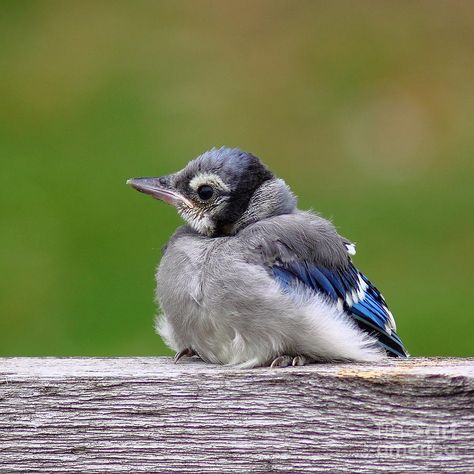
Learn more about The Spruce's Editorial Process
The Spruce / Catherine Song
Every backyard birder has seen the "starving baby" act by fledgling birds, when they flutter their wings and call piteously for attention from seemingly hard-hearted, indifferent parents. The desire to nurture those fluffy balls of feathers can be strong, but it is important to understand the special needs of a fledgling's diet and know what to feed a baby bird for the best nutrition.
Do I Need to Feed This Baby Bird?
Baby birds have very demanding dietary needs. Depending on their age and species, baby birds may eat off and on for 12 to 14 hours per day, consuming a diet rich in insects for sufficient protein to ensure healthy growth. No human other than a licensed bird rehabilitator has the proper equipment, food supplements, or endurance to keep up that frantic feeding schedule. If you find a baby bird that appears to need feeding, the best thing to do is not to feed it, but to get it to an appropriate bird rescue organization. In many cases, the begging birds are not abandoned and the parent birds are nearby and tending to their babies as needed, even if they aren't seen.
In many cases, the begging birds are not abandoned and the parent birds are nearby and tending to their babies as needed, even if they aren't seen.
If you find a baby bird that seems to be unfed, watch the bird closely for a while to see if the parents return to feed it within the hour. Bear in mind that it may take just seconds for a parent bird to deliver a bite to its chick, and inattentive observers may miss several feeding cycles. As the chicks grow, feeding may also be less frequent, and one parent bird may be tending to several offspring in different locations, so parental visits may be uneven. If the baby is being fed, rest assured that the parent bird is able to keep up with its demands, and no intervention is necessary if the baby does not appear injured or ill in any other way.
If the baby bird is not being fed and appears to be growing weaker and more lethargic, the first step should be to find a licensed rehabilitator to provide it proper care. When contacting the rehabilitator, ask for their evaluation of the bird in question before attempting any emergency feeding.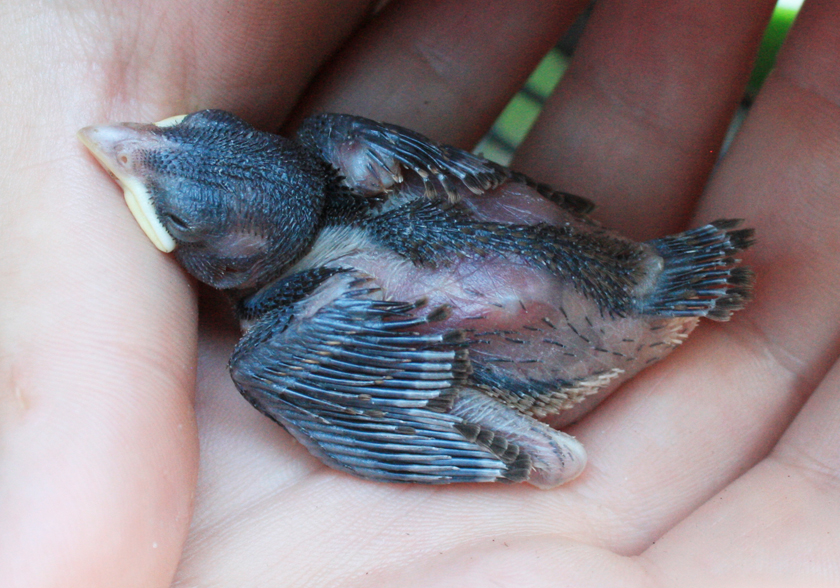 If it is recommended that you feed the baby bird, he or she might have specific suggestions in mind as an emergency measure, and those suggestions should be meticulously followed.
If it is recommended that you feed the baby bird, he or she might have specific suggestions in mind as an emergency measure, and those suggestions should be meticulously followed.
If Feeding Is Necessary
If you find a baby bird that needs to be fed but you are unable to contact a bird or wildlife rehabilitator, it is important to know what to feed a baby bird that will provide similar nutrition to its natural diet. While every wild bird has a different diet, several types of food can serve as emergency rations when necessary. At the same time, it is critical to understand that baby birds have very different nutritional needs than adult birds, and foods you would normally feed to your backyard birds are not appropriate for young fledglings.
Good Foods for Baby Birds
- Moist dog food
- Raw liver (no seasoning)
- Hard-boiled eggs
- Dog biscuits (moistened)
- Dog or cat kibble (moistened)
The Spruce / K. Dave
What Not to Feed Baby Birds
- Water
- Bread or bread products
- Whole birdseed
- Milk
- Pet bird food
- Worms
- Kitchen scraps
The more mature a baby bird is, the more "adult" food it can consume without harm, and the longer it can go between feedings.
The Spruce / K. Dave
Tips for Feeding Baby Wild Birds
If it is necessary for you to feed a baby bird, remember:
- Offer food that is spongy in texture, not dripping with water that could cause choking or drowning. All dry food should be softened before being offered to a baby bird.
- Food should be offered at room temperature only, never warmed or heated, and also never refrigerated or chilled.
- Keep bits of food small and in proportion to the bird's size; very small birds need very tiny bites. Cut or crush food appropriately to suit the bird's size.
- While feeding the bird, handle it as little as possible to minimize the risk of additional stress or injury. Never force the bird's bill open to eat.
Caring for Baby Birds
Remember that feeding a baby bird should be an emergency measure only. If a baby bird is abandoned and needs care, it should be taken to a bird rescue organization or experienced rehabilitator as soon as possible.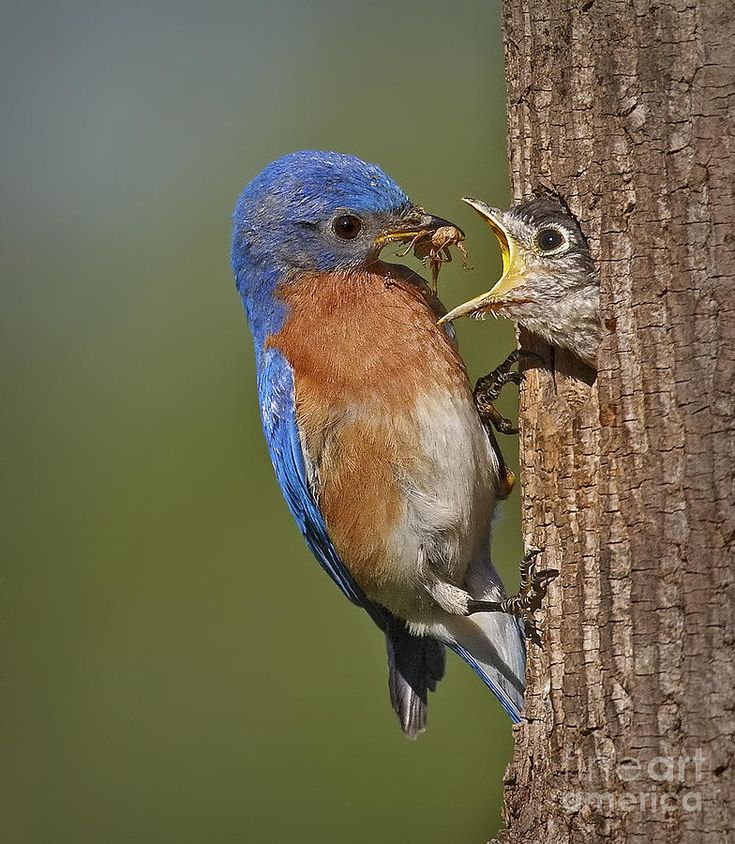 Rehabilitators can not only feed it an appropriate diet for its species but can help it learn how to find its own food, evade predators, and learn other skills necessary for a successful life in the wild.
Rehabilitators can not only feed it an appropriate diet for its species but can help it learn how to find its own food, evade predators, and learn other skills necessary for a successful life in the wild.
If there is no rescue organization or experienced rehab specialist available in your area, keep these tips in mind:
- Identify if the bird is a nestling (few or no feathers) or a fledgling (a feathered bird approaching adulthood). Nestlings will require much attention for a longer period than fledglings, which may be nearly ready for independence quite soon. An older fledgling can sometimes be fine if you simply place it high on a branch where its parents can find it. Nestlings, on the other hand, may require several weeks of attention (assuming a bird rehab organization is not available) to give them a chance for survival.
- Protect it from predators—including family pets. Normally, a simple cardboard box lined with a towel, placed high enough to be out of reach of pets, will suffice.
 If using a lidded container, make sure it is well-ventilated. Ordinary room temperature is normally fine, though a gentle heat lamp can be used if the room is very cold at night. But take care not to overheat the young bird—in most cases, no heat source is necessary.
If using a lidded container, make sure it is well-ventilated. Ordinary room temperature is normally fine, though a gentle heat lamp can be used if the room is very cold at night. But take care not to overheat the young bird—in most cases, no heat source is necessary. - Give it a "nest" by using a small towel or cloth diaper formed into a concave shape and placed in the bottom of the box. This will help support the bird's body until it grows stronger.
- Small nestlings are best fed with moist, well-softened food from a syringe, offered very gently, in small drops. Even a kitchen baster may be too large to be useful. As a nestling grows older, you can offer it food by dangling it from tweezers in front of its beak.
- Never try to feed water directly to a baby bird. Nestlings will get their water needs met through moisture in food. A fledgling can be offered water in a shallow dish—if it's ready to consume water this way, it will drink on its own.
- When a fledgling bird has fully feathered out and is beginning to exercise its wings by flapping, it can be given time outdoors and encouraged to begin flying.
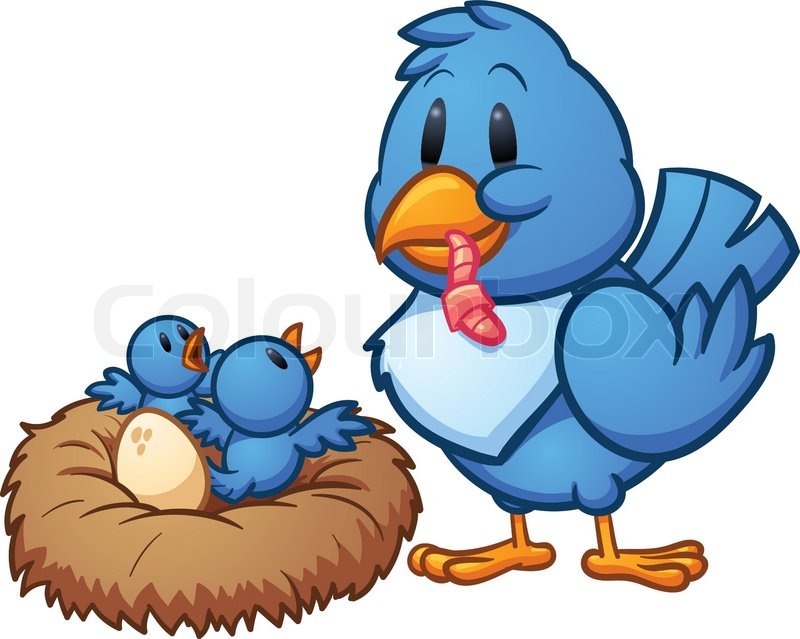 Often, it is enough to simply set the bird's containment box outside in a safe location, open the lid and wait for nature to take its course.
Often, it is enough to simply set the bird's containment box outside in a safe location, open the lid and wait for nature to take its course.
But remember that raising a featherless nestling bird through the fledgling stage and into a mature adult bird is no easy matter. It's always better to leave this to professionals who are experienced in the practice.
Article Sources
The Spruce uses only high-quality sources, including peer-reviewed studies, to support the facts within our articles. Read our editorial process to learn more about how we fact-check and keep our content accurate, reliable, and trustworthy.
Picking up baby birds can do more harm than good. Oregon State University.
Feeding birds and feeding chicks - songbird
by hawfinch
When purchasing new pets, do not forget to find out what their previous owners fed them.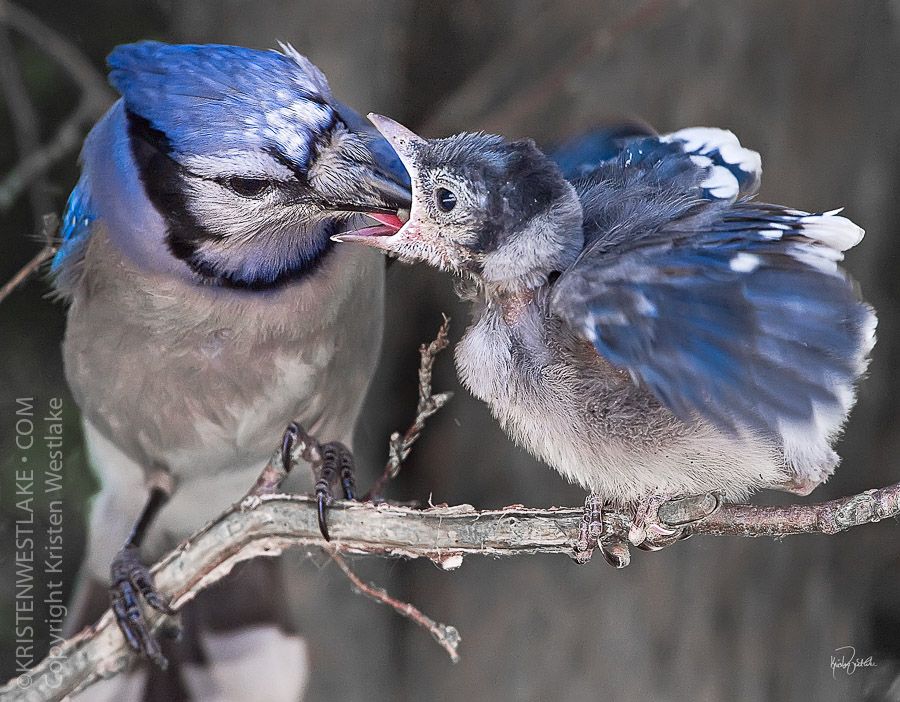 Even if the feeding was not quite correct, the birds should be gradually accustomed to new feeds. A sharp change can cause them an upset of the intestines, forced untimely molting. and other diseases. The owner of the bird himself, empirically, establishes the daily rate of feed. It must be remembered that birds, even in an apartment, are affected by weather changes. With a sharp decrease in atmospheric pressure, birds eat less than usual, the same in cloudy weather.
Even if the feeding was not quite correct, the birds should be gradually accustomed to new feeds. A sharp change can cause them an upset of the intestines, forced untimely molting. and other diseases. The owner of the bird himself, empirically, establishes the daily rate of feed. It must be remembered that birds, even in an apartment, are affected by weather changes. With a sharp decrease in atmospheric pressure, birds eat less than usual, the same in cloudy weather.
In the period of molting, on the contrary, there comes a time of hyperphagy, that is, excessive consumption of food necessary for building a new plumage. Therefore, you should always give food a little more than the bird can eat. Sometimes the bird refuses to eat the food it took the day before. In this case, you should make a schedule and alternate the necessary feed. Thus, we diversify not only feeding, but also the lifestyle of cell pets. Careful observation of his pets will also help the amateur in determining the right diet. They themselves will let you know what is missing in their diet. The most important rule is that the diet should be as diverse as possible.
They themselves will let you know what is missing in their diet. The most important rule is that the diet should be as diverse as possible.
Feeding chicks is always a laborious process, which is available only to true bird lovers who know how to feed them. The methodology includes knowledge about the composition (percentage of components) of the feed, methods of its preparation and serving to chicks, the frequency of feeding (you cannot make large intervals between meals, since birds have a high level of energy metabolism and the chick can die under all other favorable conditions), air temperature , especially in the first days and weeks of life, when normal thermoregulation of the body has not yet been established (both hypothermia and overheating are harmful). In recent years, methods have been developed for artificial rearing of chicks of various bird species, starting from the age of 1-3 days.
Foreign poultry farmers, for example, advise the following: songbird chicks should be placed in a cardboard box or clay flower pot, the bottom of which is lined with wool or soft cloth.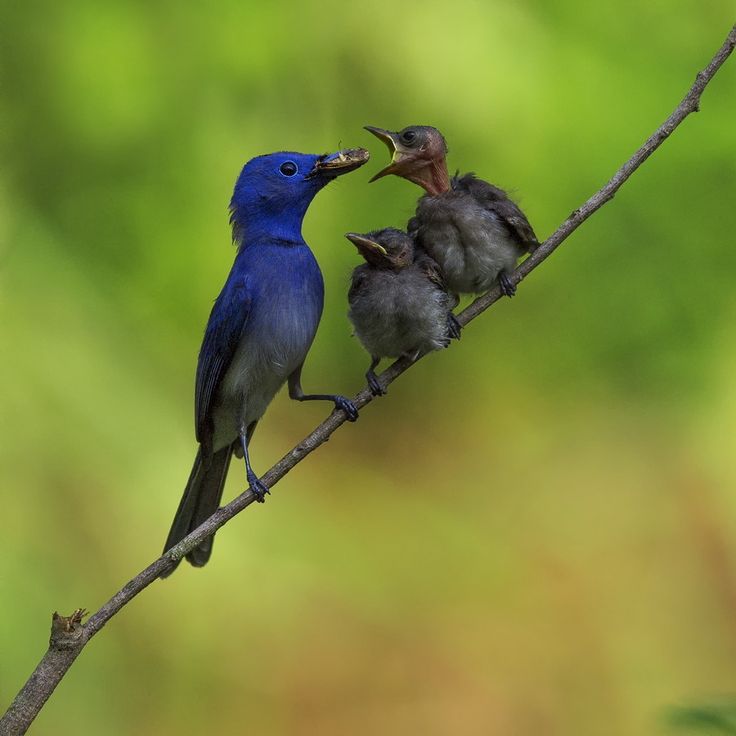 This room is covered with a piece of thin material or a handkerchief. Above it you need to install a table lamp (and under the box you can place an electric heating pad with adjustable heat instead of a lamp). The temperature in the nest should not exceed 30-35°C. In the absence of a thermometer, it can be controlled by hand.
This room is covered with a piece of thin material or a handkerchief. Above it you need to install a table lamp (and under the box you can place an electric heating pad with adjustable heat instead of a lamp). The temperature in the nest should not exceed 30-35°C. In the absence of a thermometer, it can be controlled by hand.
For songbird chicks, this diet can be offered. In a lightly beaten raw chicken egg, add meat and bone meal, egg biscuit, boiled rice, chopped freshly shed mealworm (or dry insect powder, gammarus) or other tender live insects. Mix all this in equal parts with cottage cheese (it should be fresh, non-sticky and non-greasy) then roll into small balls. Before feeding, the balls must be moistened with saliva. Saliva contains enzymes that help chicks digest the carbohydrates in their food.
For corvids and other large omnivorous birds, in the first days of their life, in addition to the above food, small pieces of meat or fish can be given. They need to be dipped in pepsin (an enzyme in the stomach that helps digest protein foods).
From our experience in feeding chicks of granivorous and insectivorous birds, we can recommend the following. Chicks need to be placed in a small cardboard box, laying hygroscopic paper napkins under them. The box itself must be covered from above with a piece of cloth and put on a heating pad (you can use a rubber heating pad or heat the box from above with a lamp). The air temperature in the nest box should be 30 - 33 ° C. Chicks are fed every 1-1.5 hours with a break at night from 0 to 6 hours. After feeding, you need to wait until the chicks secrete a capsule with droppings and carefully remove it with tweezers.
At the age of 8 - 10 days, additional heating can be stopped, in nature at this time the parents no longer heat the chicks, but the ambient air temperature should not be below 20 ° C. The intervals between feedings are gradually increasing. The food for the chicks can be a mixture of cottage cheese, the yolk of a hard-boiled chicken egg, gammarus scalded with boiling water and ant pupae, as well as chopped flour worm and other small insects. By the age of two or three weeks, the chicks begin to flutter, so they need to be placed in a spacious cage or aviary.
By the age of two or three weeks, the chicks begin to flutter, so they need to be placed in a spacious cage or aviary.
VA Grinev (1991), referring to R. Noegel, gives the following food formulation suitable for large parrots of many species. “On the first day of life, chicks are fed baby food made from cereals with a high protein content. Baby food is stirred in water to a liquid consistency, which facilitates the use of a pipette, dropper or catheter. The mixture is given in a heated form every 2 hours during the first day. For each feeding, a new portion of the mixture is prepared, since if a stale mixture is used, the chick may die.
After the first day of feeding, use a mixture of the following composition; one part pumpkin seeds, one part sunflower seeds, one part wheat grains, one part soybean powder, one teaspoon calcium powder, one teaspoon wheat oil. Seeds should be well peeled and washed with water. All this is mixed in a mixer until a homogeneous mass is obtained, after which it can be fed to the chicks . .. One third of the portion given to the chicks should consist of a well-mashed ripe banana or ripe apple ... A drop of liquid vitamins and minerals should be added to the mixture daily.
.. One third of the portion given to the chicks should consist of a well-mashed ripe banana or ripe apple ... A drop of liquid vitamins and minerals should be added to the mixture daily.
The mixture should be warm but not hot. It is given every 3 hours from 8 am to 11 pm ... In 7 weeks they (chicks) completely fledge and begin to feed on their own. At this time, they need to be transferred to grain feed. The first 2 weeks, the chicks are fed from a pipette or dropper, but later - from a teaspoon.
For incubated chicks that have not received parental enzymes and intestinal flora, it is recommended to add human saliva and fresh droppings of parent birds to the feed twice a week.
Literature
Headings Keeping birds Tags rearing chick, chick, fledgling
© 2022 Songbird • Powered by GeneratePress
Bird of Happiness « Veters.kz - information portal about hunting, fishing, mountaineering, tourism and ecology
Author of the text and photo Alexander ZHDANKO
In July of this year, I came across a singing male bluebird on a small spring river in Zailiysky Alatau.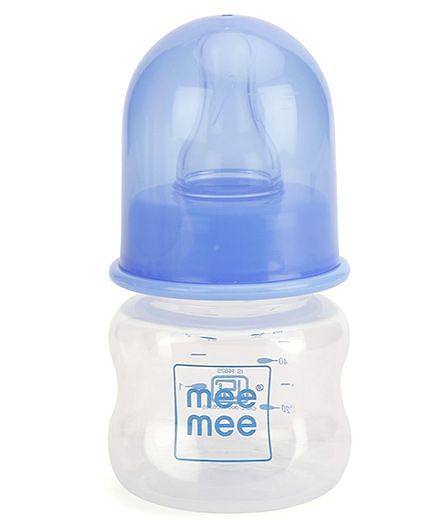 While I was sitting and drinking fragrant tea from mountain herbs, I repeatedly observed a male and a female next to me. Both birds, darting along the river with great zeal, gathered beaks full of various insects and earthworms. It was clear that there was a nest somewhere nearby. It is known that at this time this species already has quite large chicks.
While I was sitting and drinking fragrant tea from mountain herbs, I repeatedly observed a male and a female next to me. Both birds, darting along the river with great zeal, gathered beaks full of various insects and earthworms. It was clear that there was a nest somewhere nearby. It is known that at this time this species already has quite large chicks.
I know this river quite well, and I don't remember the characteristic rocky cliffs hanging over the water, which are convenient for arranging a nest on it. In the Tien Shan, I repeatedly had to find nests of bluebirds. All of them were located in the same way: an almost vertical rocky foothold near a mountain river at least three meters wide and high, and the nest was usually located in a small niche, about 1–1.5 meters above the water level. An exception can only be nests in places of man-made structures, usually made of concrete: bridges, underground tunnels with water, etc. Such an arrangement of nests is practically unattainable for land-based enemies of the bluebird. Having enjoyed the beautiful song of the male, I filmed for about three more hours. I took a few shots with a telephoto lens, but it was all “not right”.
Having enjoyed the beautiful song of the male, I filmed for about three more hours. I took a few shots with a telephoto lens, but it was all “not right”.
There was a female in the frame all the time, which I had shot many times before, and I needed a male, who, as you know, is very cautious in bluebirds and usually does not let you get far enough for a good picture. As time went on, the sun began to set behind the tall Tien Shan firs and the lighting for shooting in the gorge became unacceptable. It's time to head home. The thought never left my head: where is the nest anyway? After all, the birds were constantly spinning next to me. But the place was too unsuitable for this species. I slowly walked along the path, which began to leave the river, climbing a little up the slope.
Somehow casually turned around and took one last look at the seething water jumping over the stones. And then the most interesting thing happened. On a large stone (2 by 2 meters) lying separately on the shore, something stirred right above the water in a small niche.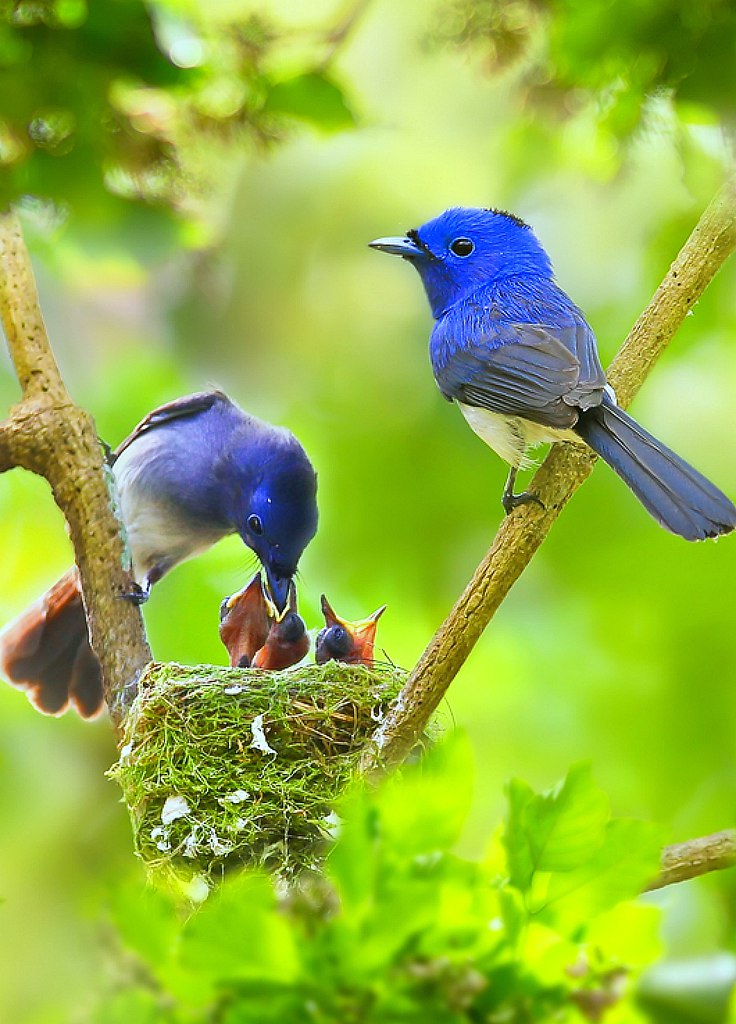 "Can't be!" – a thought flashed through my head.
"Can't be!" – a thought flashed through my head.
Turning back, I quickly went to the river and saw the nest! There were four large blue bird chicks in it! Deep shadows have already fallen in the gorge, but from a close distance of 4–5 meters, the chicks were clearly visible through the camera lens. To be honest, this is the first time I've seen them so close. They seemed to me cute and a little funny, like little penguins - due to two large downy feathers at the edges of the head. After taking a few control shots "just in case", I went to the camp, which was located downstream of the river, with the firm intention of returning here tomorrow morning.
The next day my friend and I arrived at the place at 9 am. We settled down in the shade of a small spruce, opposite the nest, after carefully plucking the tall grass in the direction of the nest so that it would not interfere with the shooting. In the morning, the lighting was not very good, semi-backlit, and the birds even sat down against the background of white foamy water, so we hoped to get the best pictures in the afternoon.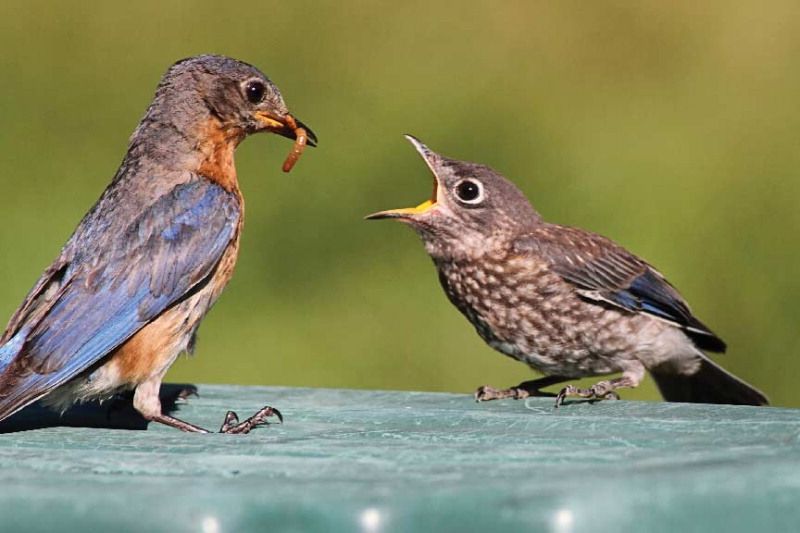 In the morning it was just interesting to watch the work of the parent birds. Parents fed the chicks quite often - every 10-15 minutes.
In the morning it was just interesting to watch the work of the parent birds. Parents fed the chicks quite often - every 10-15 minutes.
The female constantly flew down the river and the male up. In hot weather, both birds always swam in the river, in a small shallow backwater 20 meters from the nest. Thus passed the second day of observations.
Third day. In the morning I decided to cross the river and take pictures of the birds from ambush by the rising morning light. From this point they sat down not against the background of white water splashes, but against the background of green coastal thickets, which made it possible to admire the purple tint of their plumage. After sitting under a camouflage net until lunch, I took a number of good pictures. After lunch, I moved to the opposite bank, from where the nest was clearly visible and photographed the feeding of the chicks.
Fourth day. In the morning there was a very intensive feeding. Birds kept appearing at the nest. The food was mainly earthworms, but there were also many different insects: grasshoppers, locusts, wasps, bees, etc. It seemed that the birds grabbed everything they could catch nearby.
The food was mainly earthworms, but there were also many different insects: grasshoppers, locusts, wasps, bees, etc. It seemed that the birds grabbed everything they could catch nearby.
They brought a mouse twice. The first time the prey was put into the chick's mouth as a whole, and the second time it was fed piece by piece. On the shore near the water, the female 0 simply tore the mouse apart with a powerful beak, holding the prey with strong claws. The male constantly flew up the river and once his mouth was filled with something pink - which, through the lens, was impossible to make out. I decided to take a walk along the river and find out. Above the river, a hundred meters from the nest, there was an abandoned tourist camp. Half a loaf of bread and ... a piece of doctor's sausage lay on a stone near the fire. Here it was dragged by a smart male! He carried it to the chicks until it was all gone.
By this time the chicks had almost completely fledged and stood up on their long legs one by one, as if warming up, pushing each other all the time. At times it seemed that someone was about to push someone out of the nest. And it inevitably happened. At some point after the next feeding, two chicks could not stay on the edge of the nest and fell into a seething stream. In a few seconds, I had already lost sight of them. Thus ended the day. Twilight descended. I went to the tent, and falling asleep, I thought about the fate of the fallen chicks.
At times it seemed that someone was about to push someone out of the nest. And it inevitably happened. At some point after the next feeding, two chicks could not stay on the edge of the nest and fell into a seething stream. In a few seconds, I had already lost sight of them. Thus ended the day. Twilight descended. I went to the tent, and falling asleep, I thought about the fate of the fallen chicks.
Fifth day. In the morning I found only one chick in the nest. Disguised under a Christmas tree near the shore, 20 meters from the nest, on the opposite bank, he began to observe. It soon became clear that in addition to the chick in the nest, there is another one that sits on the river bank almost directly below me. I couldn't see him, but I could clearly hear his call. It was clear that this chick somehow managed to cross the river. So, I thought, other chicks may not have drowned either and swam out somewhere down the river! Meanwhile, the parents brought food, either to the nest or under the shore.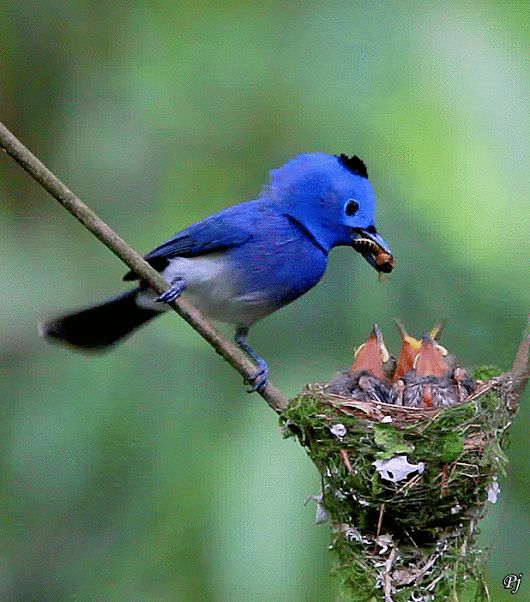 I held my breath as it became possible to see and photograph the bluebird at close range. After a while, I managed to do it. "Blue" flaunted in front of me at 10 meters! Sure, he saw me, but still posed a little! His unforgettable poses and wonderful song will remain in my memory. Night fell, and with great pleasure I fell asleep in a tent under the lulling sound of a mountain river.
I held my breath as it became possible to see and photograph the bluebird at close range. After a while, I managed to do it. "Blue" flaunted in front of me at 10 meters! Sure, he saw me, but still posed a little! His unforgettable poses and wonderful song will remain in my memory. Night fell, and with great pleasure I fell asleep in a tent under the lulling sound of a mountain river.
Sixth day. In the morning it turned out that the chick, sitting under the shore, disappeared and did not appear again. The only chick gave voice from under a steep river cliff, 15 meters from the nest. This place was closed on all sides by bushes and tall grass. I crossed the river and until lunch, hiding in the thickets nearby, watched him feed. The birds clearly felt the presence of a person and therefore approached the chick with food very carefully. I would say, in a plastunsky way. Filming in the deep shadow of the cliff was impossible, so I decided not to disturb my parents any more and quietly left the place of my ambush.